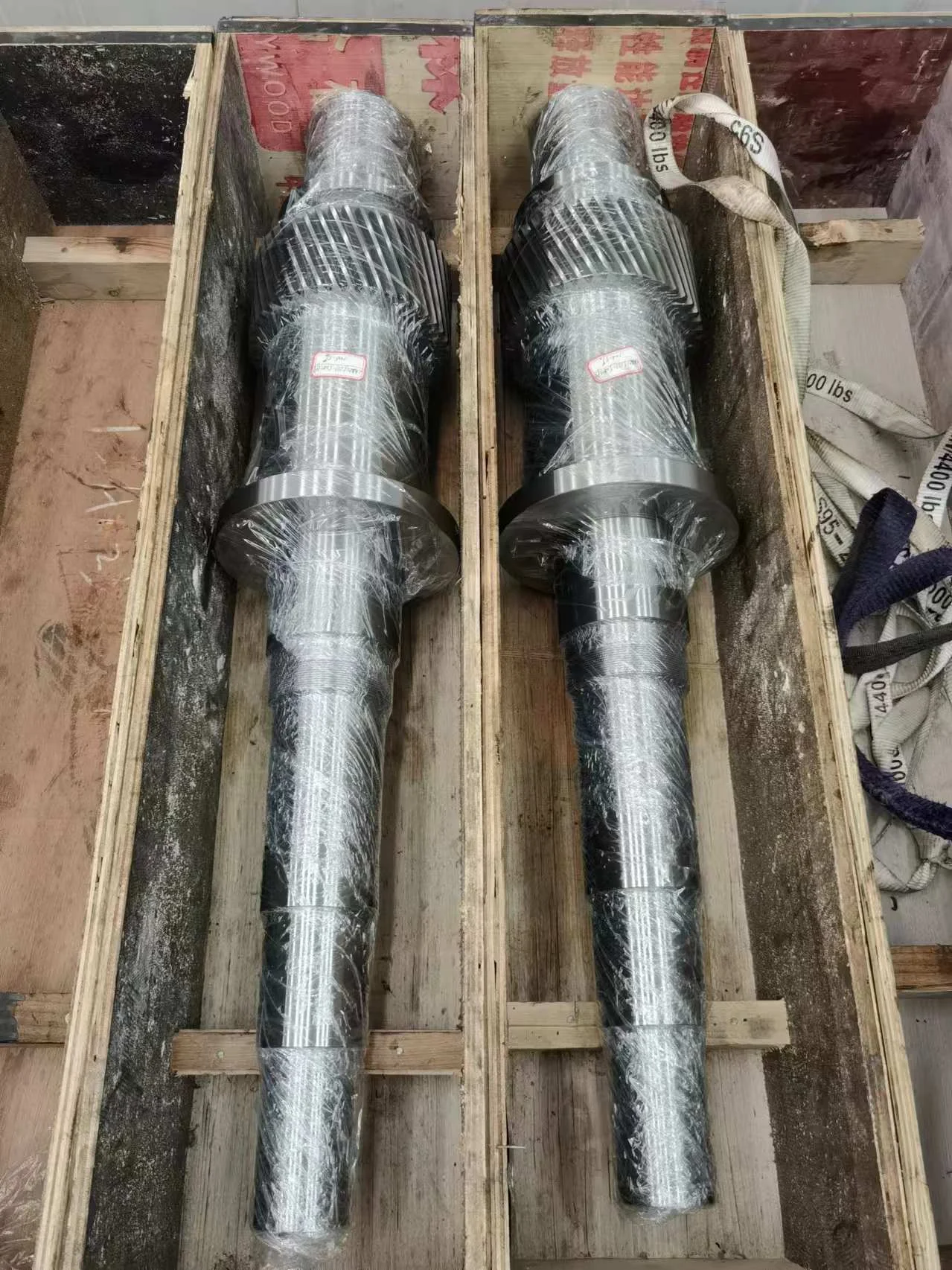- This topic is empty.
-
AuthorPosts
-
2025-09-09 at 4:57 pm #86504
In industrial machinery, precision and durability are critical for ensuring efficiency. One component that embodies both qualities is the compressor gear shaft. This mechanical part is designed to transfer torque, synchronize motion, and maintain stability under high loads. Whether applied in refrigeration compressors, air compressors, or gas turbines, the gear shaft serves as a backbone for smooth operation. Understanding the compressor gear shaft not only highlights its technical importance but also emphasizes its role in advancing energy efficiency and industrial reliability. In this blog post, as a professional custom precision gear wholesale factory, Longruifa will share the engineering design of compressor gear shaft for sale, its advantages, applications, etc.
Why the Compressor Gear Shaft Matters in Compressors
A compressor gear shaft functions as the connecting medium between rotating elements, enabling the efficient transmission of power. Its main tasks include:
-
Power transmission: Converting motor-driven rotation into compressor-driven motion.
-
Load support: Bearing the axial and radial forces generated during compression.
-
Synchronization: Coordinating gears for smooth rotational speed and pressure consistency.
Without a reliable gear shaft, compressors would face issues such as vibration, gear misalignment, and reduced service life.
Engineering Design of Compressor Gear Shaft
The design of a compressor gear shaft involves precise engineering. Several factors come into play:
-
Material selection: High-strength alloy steels and surface-treated metals resist fatigue and wear.
-
Heat treatment: Carburizing, nitriding, or induction hardening improve surface hardness.
-
Dimensional accuracy: CNC machining ensures perfect alignment of gears and shaft surfaces.
-
Surface finish: Polished surfaces reduce friction and improve lubrication efficiency.
The combination of these engineering processes ensures that the compressor gear shaft withstands harsh environments and high-pressure workloads.
Applications of Compressor Gear Shafts in Industry
The applications of compressor gear shafts span across multiple fields, showcasing their versatility:
-
Refrigeration and HVAC systems: Supporting gear-driven compressors for stable cooling cycles.
-
Aerospace turbines: Managing high-speed compression with minimal vibration.
-
Automotive superchargers: Ensuring efficiency in air intake compression.
-
Petrochemical plants: Withstanding corrosive environments and high-pressure loads.
Each application highlights how the gear shaft adapts to different operating conditions while maintaining performance.

Manufacturing Process of Compressor Gear Shaft
The manufacturing process of a compressor gear shaft requires precision and multiple stages:
-
Forging or casting of alloy steel blanks.
-
CNC machining to achieve high dimensional accuracy.
-
Heat treatment for durability and resistance to wear.
-
Gear cutting and grinding for exact meshing capability.
-
Final inspection and testing to verify hardness, strength, and balance.
This step-by-step process ensures that the final gear shaft is capable of delivering both performance and longevity.
Key Advantages of Well-Designed Compressor Gear Shaft
When designed and manufactured properly, a compressor gear shaft offers several advantages:
-
High load capacity for demanding compression cycles.
-
Reduced vibration due to precision balancing.
-
Extended lifespan with wear-resistant materials.
-
Energy efficiency through optimized torque transfer.
-
Lower maintenance needs from durable surface treatments.
These benefits make the compressor gear shaft a core component in extending the efficiency and reliability of compressors.
Innovations in Compressor Gear Shaft Technology
Recent years have seen innovation in compressor gear shaft technology, including:
-
Advanced alloys and composites for lighter yet stronger shafts.
-
Additive manufacturing (3D printing) for prototyping and customized geometries.
-
Smart monitoring systems that detect wear and misalignment early.
-
Eco-friendly coatings to enhance performance in sustainable industries.
These innovations not only improve durability but also align with the global push toward energy efficiency and green manufacturing.
Challenges in Maintaining Compressor Gear Shaft
Despite its strength, the compressor gear shaft faces operational challenges:
-
Lubrication issues leading to friction and wear.
-
Misalignment that accelerates gear tooth failure.
-
Thermal expansion causing dimensional instability.
-
Corrosion in aggressive industrial environments.
Routine inspection, proper lubrication, and precision alignment are essential for overcoming these challenges and extending the life of the shaft.
Selecting the Right Compressor Gear Shaft for Your Needs
Choosing the right compressor gear shaft requires evaluating:
-
Compressor type (air, refrigeration, gas turbine).
-
Load requirements including torque and pressure levels.
-
Operating environment such as temperature and exposure to corrosive elements.
-
Service life expectations balanced with cost-efficiency.
By carefully considering these factors, industries can ensure they select a gear shaft that meets both performance and economic goals.
Future of Compressor Gear Shafts
The future of compressor gear shafts lies in further innovation and sustainability. As industries demand higher efficiency and reduced downtime, shafts will likely integrate:
-
Smart materials with self-lubricating properties.
-
Predictive maintenance sensors for real-time monitoring.
-
Modular designs for quick replacement and upgrades.
-
Lightweight composites to improve fuel efficiency in aerospace and automotive applications.
These developments will redefine the role of the compressor gear shaft in modern engineering.
Conclusion
The compressor gear shaft is more than just a mechanical part—it is the foundation of compressor performance. From refrigeration and HVAC systems to aerospace turbines and petrochemical plants, the shaft ensures reliability, stability, and energy efficiency. With advances in materials, manufacturing, and smart monitoring technologies, the compressor gear shaft will continue to evolve, supporting industries in meeting the challenges of the future.
http://www.lrfgears.com
Longruifa -
-
AuthorPosts
- You must be logged in to reply to this topic.